15 Romantic Era Paintings: Unleashing Emotion
Romanticism introduced the emotional sublime to art. Here are the top examples of Romantic Era paintings.
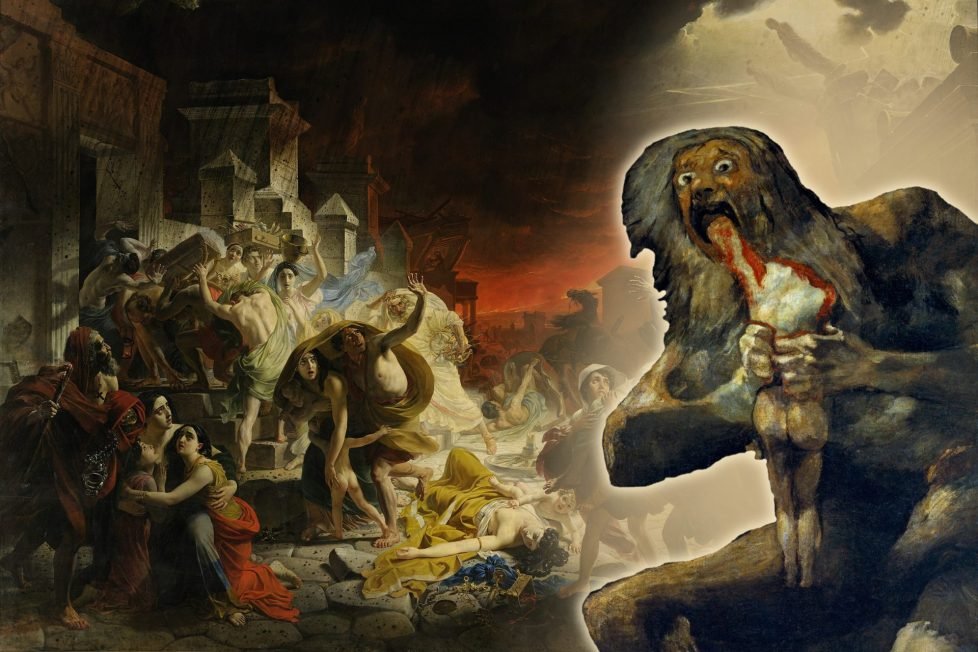
Romanticism introduced the emotional sublime to art. Here are the top examples of Romantic Era paintings.

Table of Contents
ToggleRomanticism was a literary and artistic movement that emerged at the end of the 18th century as a reaction against the stringent Neoclassical thought that had dominated the French Revolution. The ideas of Romanticism spread across Europe within the humanities throughout the first half of the 19th century, gaining extreme popularity and support from the Royal Academies of art. Romanticism emerged, in many ways, as a reaction against Neo-classicism and spread through the literature, art and architecture of the period. Romantics put emphasis on imagination, inspiration and originality. They saw the truth in nature and the beauty of the macabre.
Artists began to grapple with the nature of humanity. The sublime became a definition for aesthetic as humans began to chart their place within the universe questioning how much control they really had over nature. In France and Russia romantic works were darkly colored and evoked the emotional sublime through terror and the dark side of human nature. British and German romantic paintings often evoked the sublime through nature by juxtaposing the human as insignificant against the landscape or weather elements.
Neoclassicism had highlighted scientific discoveries, classical Greek and philosophy. In Neoclassical works of art, the rationale of humans dominated the unpredictability of the natural world and there was harmony and balance in composition. Romanticism was the exact opposite. Romantic paintings highlighted the radical change taking place across the western world and the savagery of nature. Artists across Europe no longer emphasized the heroism of a figurehead but emphasized the everyday of the individual. Romantic artists began to pull subjects from medieval stories and current events rather than ancient Greek and Roman mythology. Many artists began to place emphasis on painterly color over line which charted the beginnings of avant-garde art in nineteenth century Europe.
Characteristics of a romantic painting include the use of colors to evoke emotion, the emphasis on the sublime and nature, and the depiction of the shared human experience. A romantic painting is defined by its ability to evoke emotion within the viewer. Romantic painters did this through, often darkly colored works, that relayed the macabre of the human experience. Popular romantic themes included suffering in war, tragedy, and gothic or medieval stories instead of classical ones. Romantic painters also focused on the importance of orientalism and nationalism.
Another characteristic of Romantic painting was the loose brushwork. Artists painting in the romantic style began using a looser brushwork creating a softer look. This allowed them to tap into emotion more. Romantic painters focused on nature, believing that truth was found in nature and began painting “en plein air” (outside). They began to elevate the landscape genre. As they began painting outside, to capture the effects of nature, their brushwork loosened. Painterly brushwork reflected human emotion and the natural world.
The sublime was a key idea behind the Romantic movement. Defined as, ‘something of great excellence and beauty or the ability to aspire great awe’, the Sublime was an important concept for Romantic painters. In their attempt to evoke emotion, Romantic painters tapped into the sublime through nature, terror and delight.
Literary scholar Edmund Burke’s (1729-1797) A Philosophical Inquiry into the Origin of Our Ideas of the Sublime and the Beautiful was published in 1757 and responded to ideas about the sublime which helped to situate it as a main category of 18th century art. In his Inquiry, he writes about terror, which he notes is always a source of the sublime. Burke understood that we could take pleasure in what terrifies and delights us. Burke also wrote that infinity and vastness, were “powerful cause[s] of the sublime.” Thus, romantic painters tried to emulate the vastness of nature to evoke the sublime. For instance, they often depicted man as miniscule in comparison to the vast nature surrounding them.

The Swiss born Henry Fuseli (1741-1825) kicked off the romantic movement in art in many ways. His violent depiction of non-classical subjects and use of qualities of the sublime, was borrowed from the doctrines of Immanuel Kant (1724-1804) and Edmund Burke. In 1781, Fuseli debuted The Nightmare at the Royal Academy Exhibition, where it was immensely popular.
Borrowing from his own emotionally tumultuous past, Fuseli depicted an imagined dream where an incubus demon lies atop a sleeping, and clearly destressed woman. Many elements in the composition create the disturbed atmosphere, for instance, the horse in the background with wild eyes and the vials of medicine on the bedside, which suggest the women has undergone treatment for her ailment. Scholars have interpreted the work based on Fuseli’s own sexual repression. He was in love with his niece, Anna Landholt but was not allowed to marry her. He wrote a letter dictating a dream he had of making love to her. In this composition the sleeping woman is stuck in a nightmare, her sleep is invaded, but she is unable to move. Fuseli capitalized on the terror of this situation.
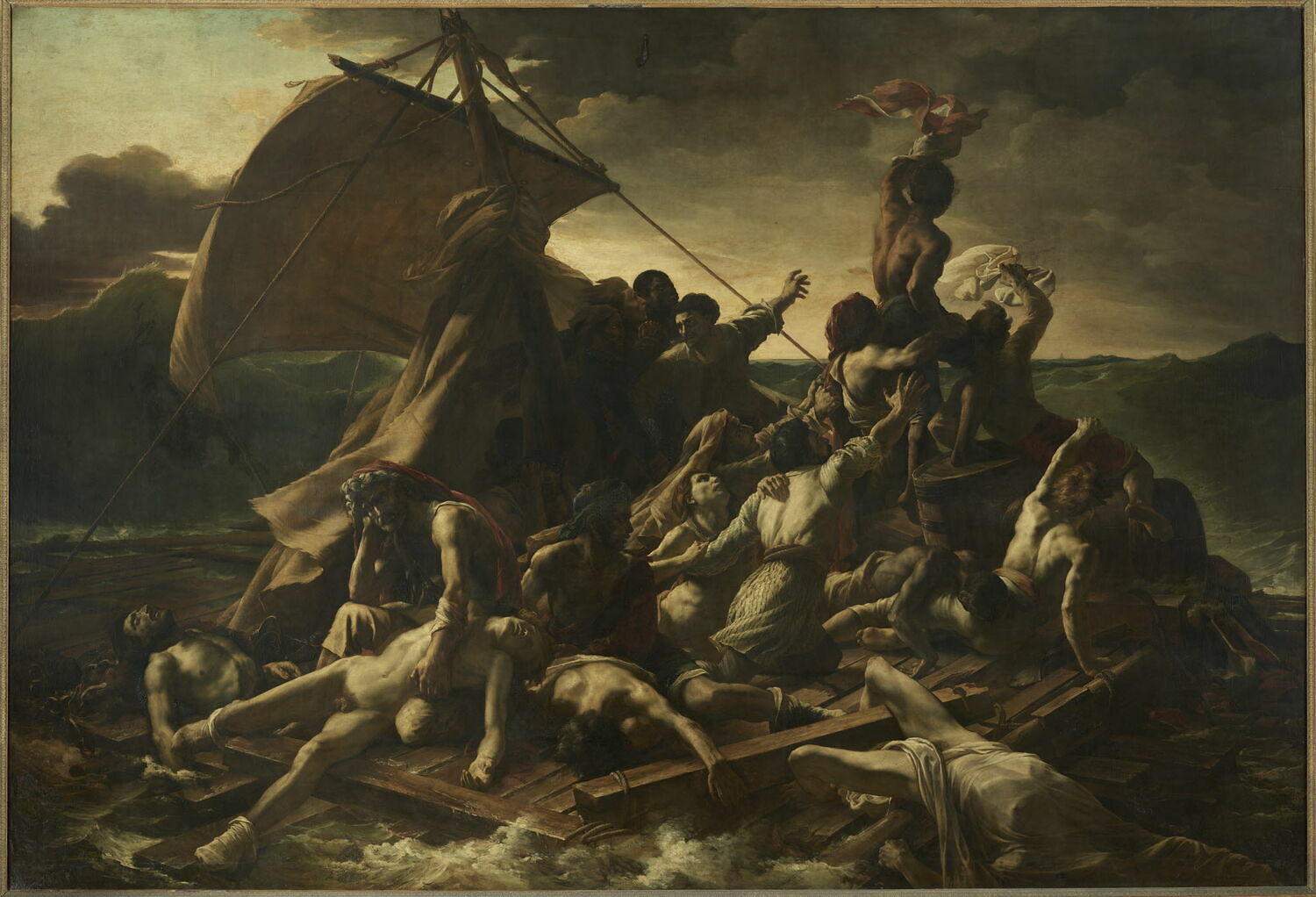
Like others of the time, French painter Theodore Gericault (1791-1824) began to pull subjects from contemporary times rather than the more common Greek mythology or history. Depicting tragic events of the time, allowed painters like Gericault to highlight the morbidity of human nature. In the Raft of the Medusa, Gericault depicted an event that was written about in newspapers. The French naval ship, the Medusa, wrecked off the coast of the African colony in Senegal. The officers reserved the six lifeboats for themselves. Leaving 152 crew stranded on a makeshift raft. Initially, the lifeboats hauled the raft behind, but eventually cut it loose. After 13 days at sea only 15 of the 152-crew survived. The horror of the story is that they had to resort to cannibalism to survive.
Gericault himself interviewed the survivors in order to depict the event. The moment he chose to portray, creates a climax to the story. The survivors sighted the English ship, the Argus, and attempted to flag it down. The figure at the peak of the classically composed triangle of figures, is an abolitionist symbolic gesture. The antiroyalists at the time who wanted to abolish the newly reconfigured monarch, pushed the message that French freedom depended on the underdog. The hero in this composition is not the Royal Officer of the Navy, but the individual French citizen left behind by those in power.
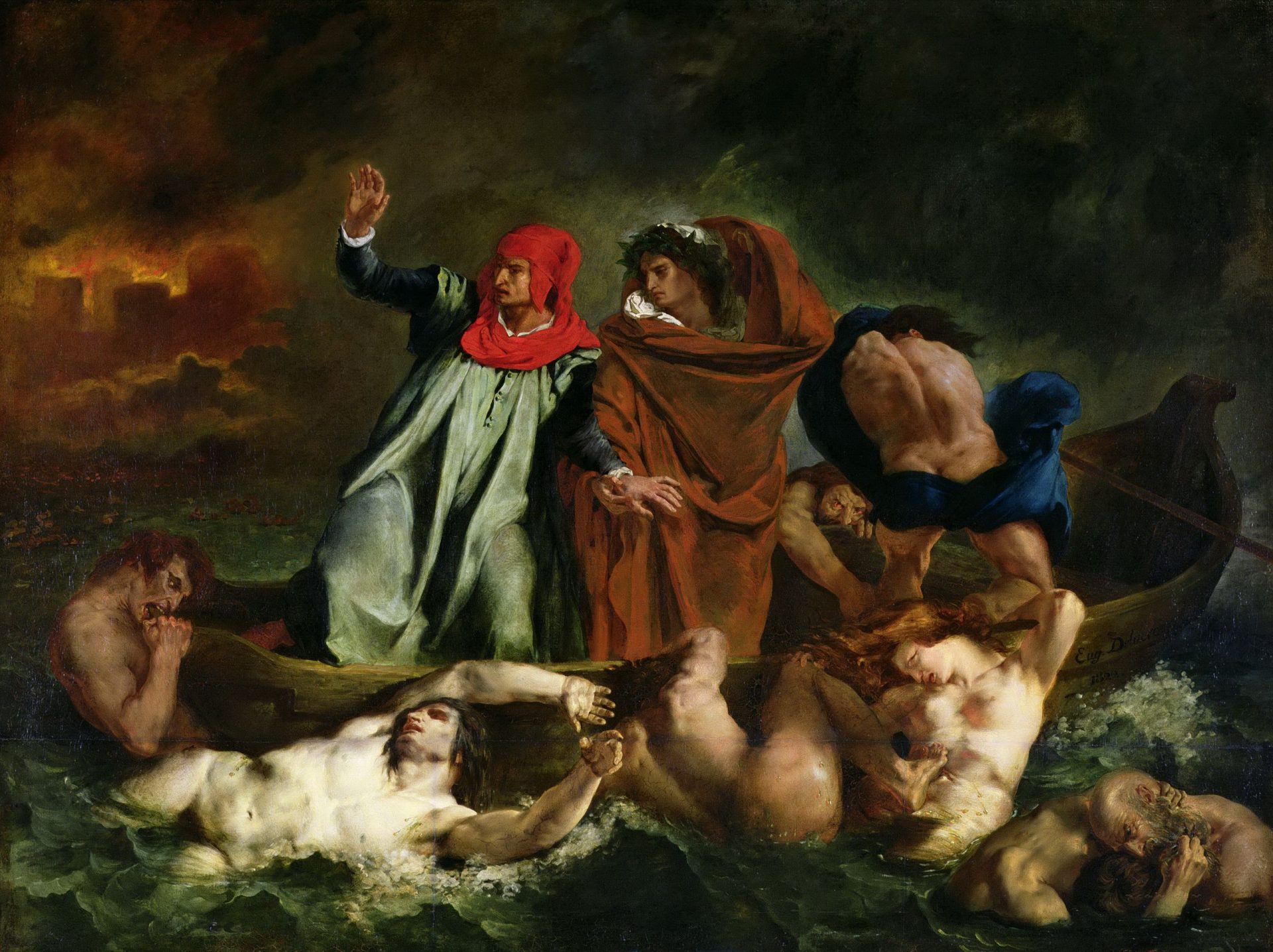
One French artist that epitomized romanticism was Eugene Delacroix (1798-1863). Delacroix produced his Salon debut work, The Barque of Dante in 1822. Though its size and subject matter situate it as a history painting, its theme hints at the developing Romanticism. In the large painting. Delacroix depicts Virgil accompanying Dante across the river Styx, a scene from Canto 8 of Dante’s Divine Comedy. In the scene, Dante and Virgil try to stay afloat as the souls of the damned latch on, clawing and snarling at their boat.
The elements of romanticism evident in this work are its dark coloration, its focus on the macabre and its painterly brushwork. Though Delacroix borrowed from the academic style of history painting, his painting truly fit within Romanticism for a number of reasons. First, the scene itself is dark and spooky. Delacroix used loose brushstroke and coloration, which he had seen in the work of Peter Paul Rubens (1577-1640). At the time critics responded to Delacroix’s lack of a heroic figure. In Davidian or neoclassical tradition a central figure is pulled away from the crowd. In this case, Dante should be that central figure, but he struggles amongst the others, and we get the sense that he is helpless in this situation. This is proof of the changing ideals of history painting toward the romantic tradition.
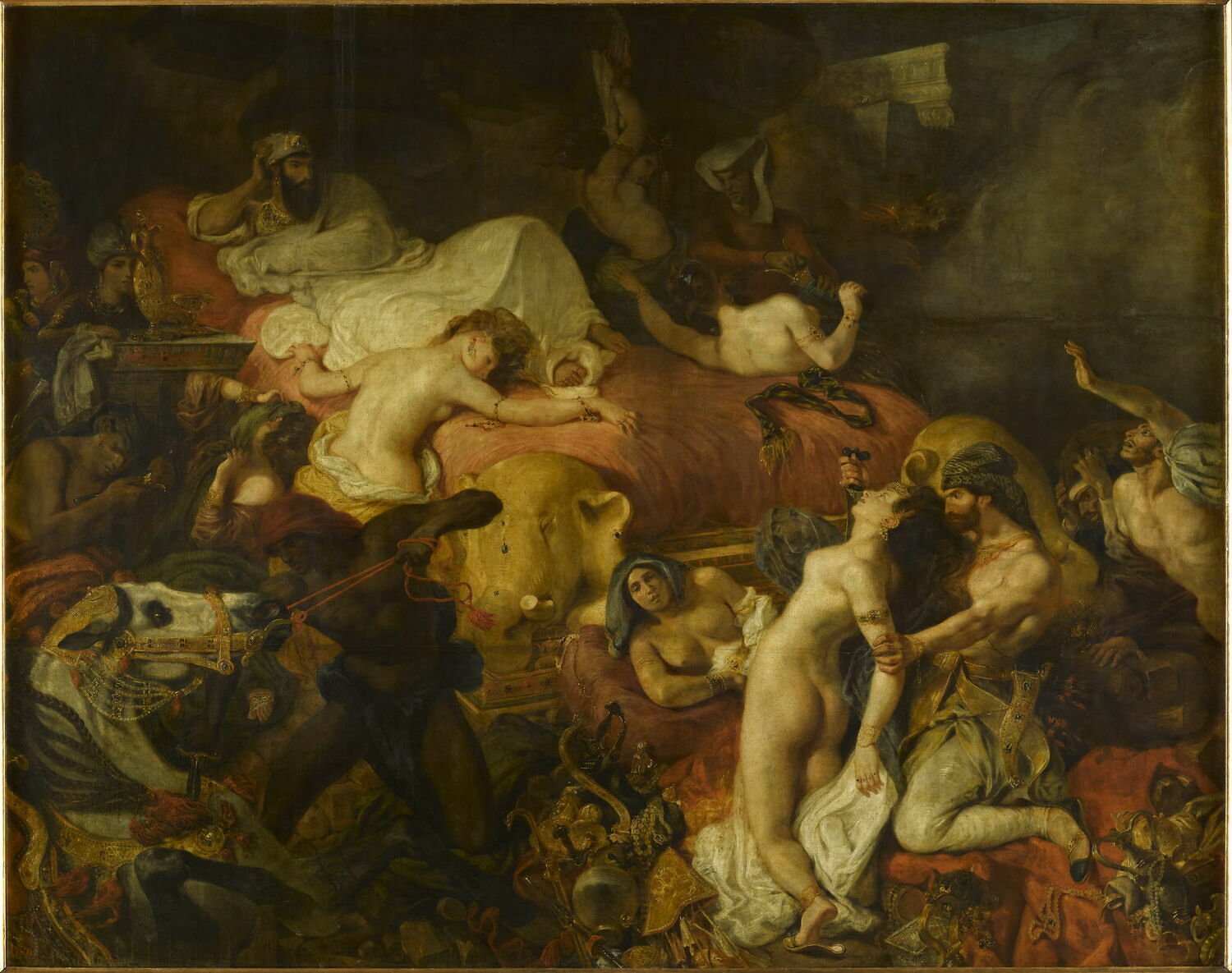
As one of the leading men of the Romantic Movement, Delacroix created many canvases in the 1820s and 1830s which reflect the movement. The Death of Sardanapalus was based on a tragedy written by Lord Byron, where an Assyrian king was conquered by an invading army. In true romantic fashion, he decides to bring together all his possessions including his slaves and brings them together on a pyre to be set ablaze. Delacroix uses strong modeling to create his characters in poses taken from the master’s such as Michelangelo or Rubens. Against a dramatic scene of total destruction, Delacroix, like many other western painters, depicts the East in a sexualized manner. In fact, western domination of the east was a key component of the Romantic Movement.
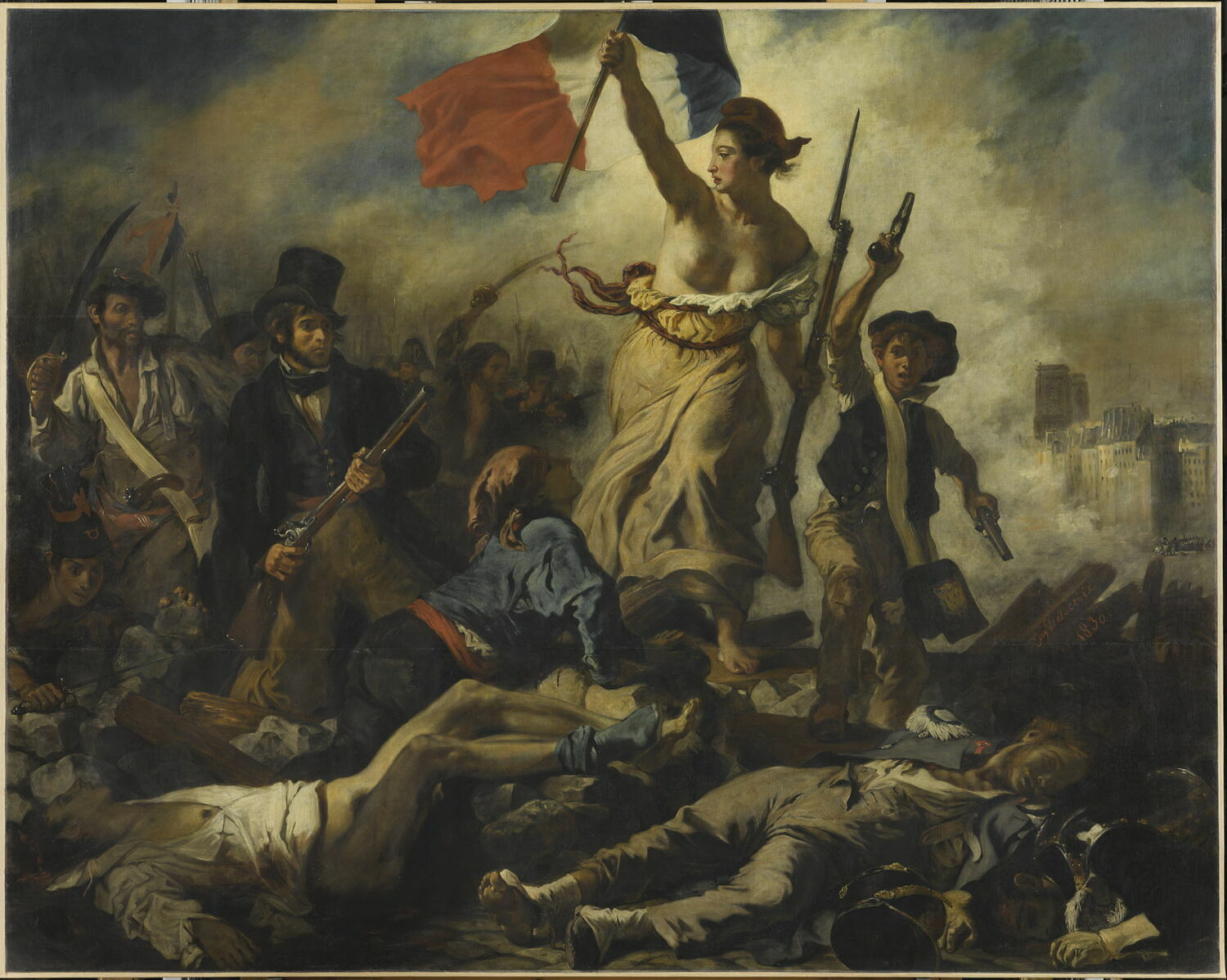
Debuting at the French Salon of 1831, Delacroix’s famed Liberty Leading the People was a monumental commemoration of the 3-day revolution responsible for overthrowing the Bourbon Monarchy. This painting depicts Marianne, the allegorical and national icon of France, known as lady liberty. Triumphantly she raises the French tricolor flag, leading the victors of the mound of dead bodies and strewn bodies. The ultimate act of Romanticism was tied up in the nationalistic victory of the masses rather than the victory of one heroic king. Delacroix’s dark and hazy background relays a romantic and dramatized version of the events, but one that certainly focuses on the emotions elicited in the viewer.
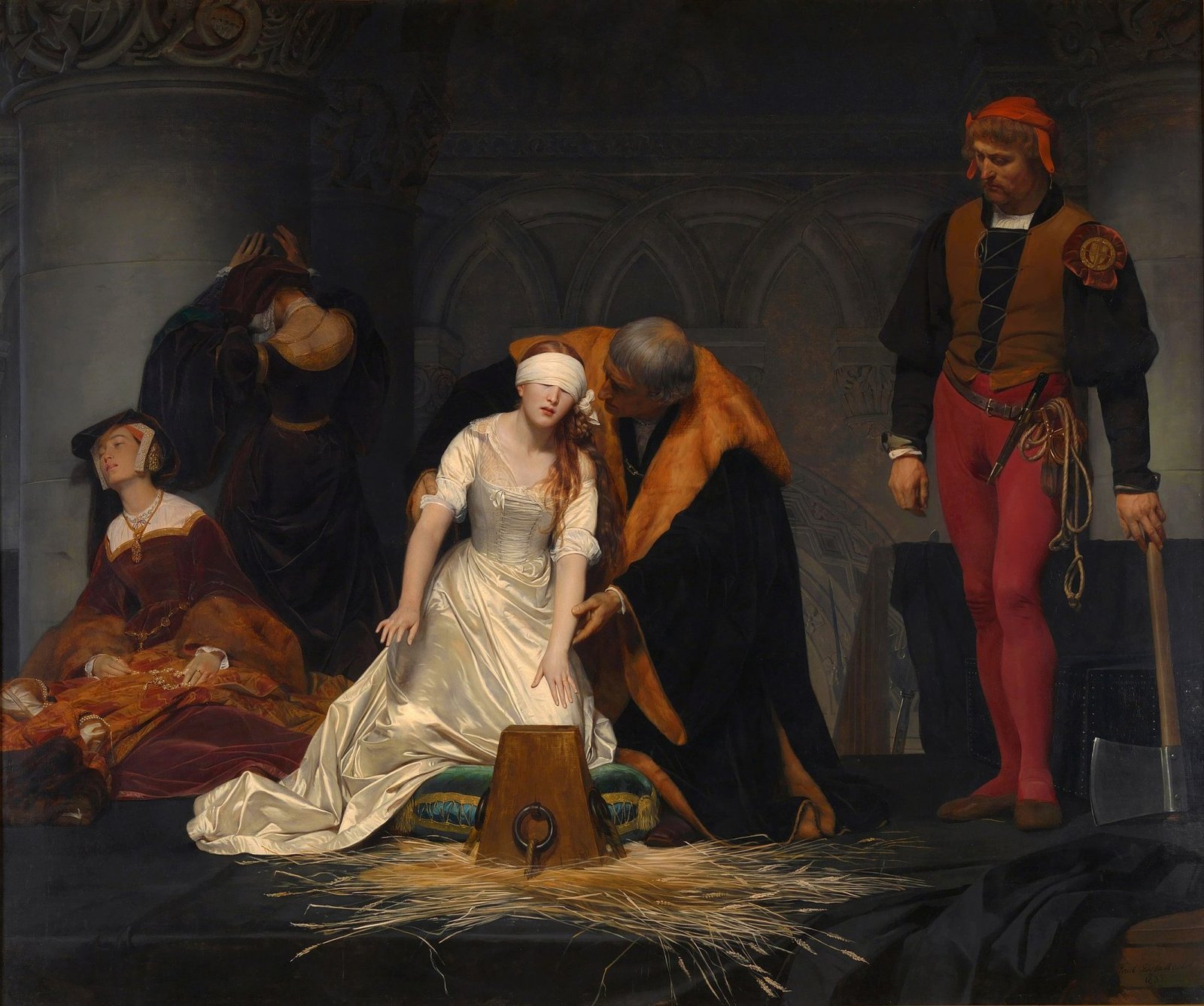
Hippolyte-Paul Deleroche (1797-1856), a French painter and advocate of Romanticism, chose the subject of the execution of Lady Jane Gray for this 1833 canvas. Lady Jane Gray was only 17 years old when she was married off to Gilbert Dudley, whose father sought to make her next in line. After only 9 days as queen, she became the lynchpin in a war between the Protestants and Catholics in England. Her cousin Mary Tudor executed her to thwart her enemies. Deleroche clearly took artistic liberties with the depiction of the scene. Historically, her execution took place outside, but Deleroche chooses to depict the scene in a dark interior which serves to dramatize the scene and highlight the macabre nature of the event.
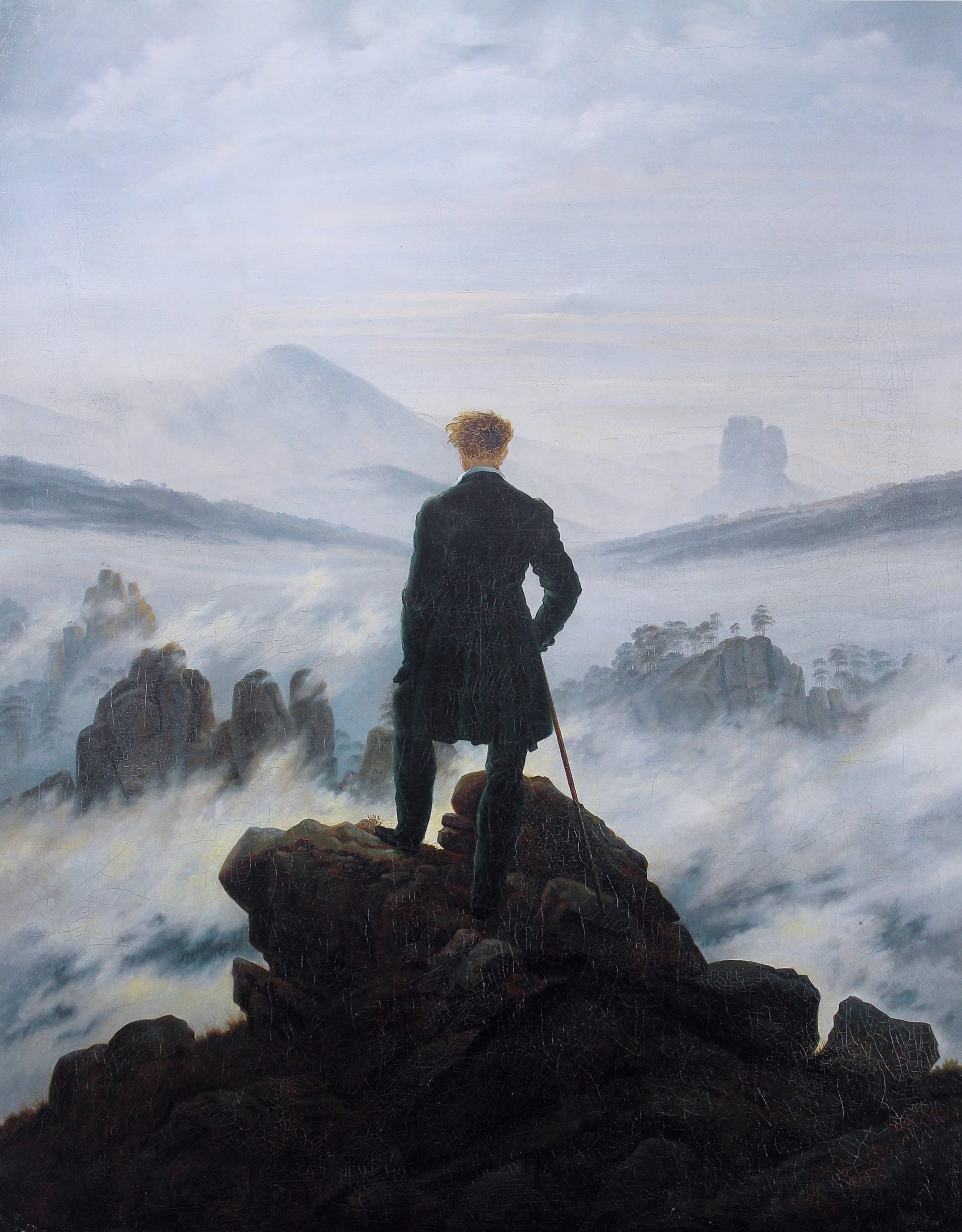
A master of the sublime was German artist, Caspar David Friedrich (1774-1840). Friedrich had both a looser, painterly brushstroke, and a sense of the sublime evoked through nature and natural phenomenon. Where German romanticism differed from the French romantic paintings is its dedication to naturalism.
Caspar David Friedrich’s The Wanderer Above the Sea of Fog from 1818 is almost always referenced in discussions of Romanticism. The dark and moody painting offers a little bit of all the characteristics of the movement. First, it reconsiders the status of a central figure or hero within the work. Though Friedrich shows the lone figure in the center of the composition, it is turned away from us effectively negating his presence, but also strangely negating the presence of the viewer. All this serves to heighten the effect of the sublime. Friedrich began to emphasize painterly brushstrokes over strict figure modeling which aided in creating a romantic atmosphere.
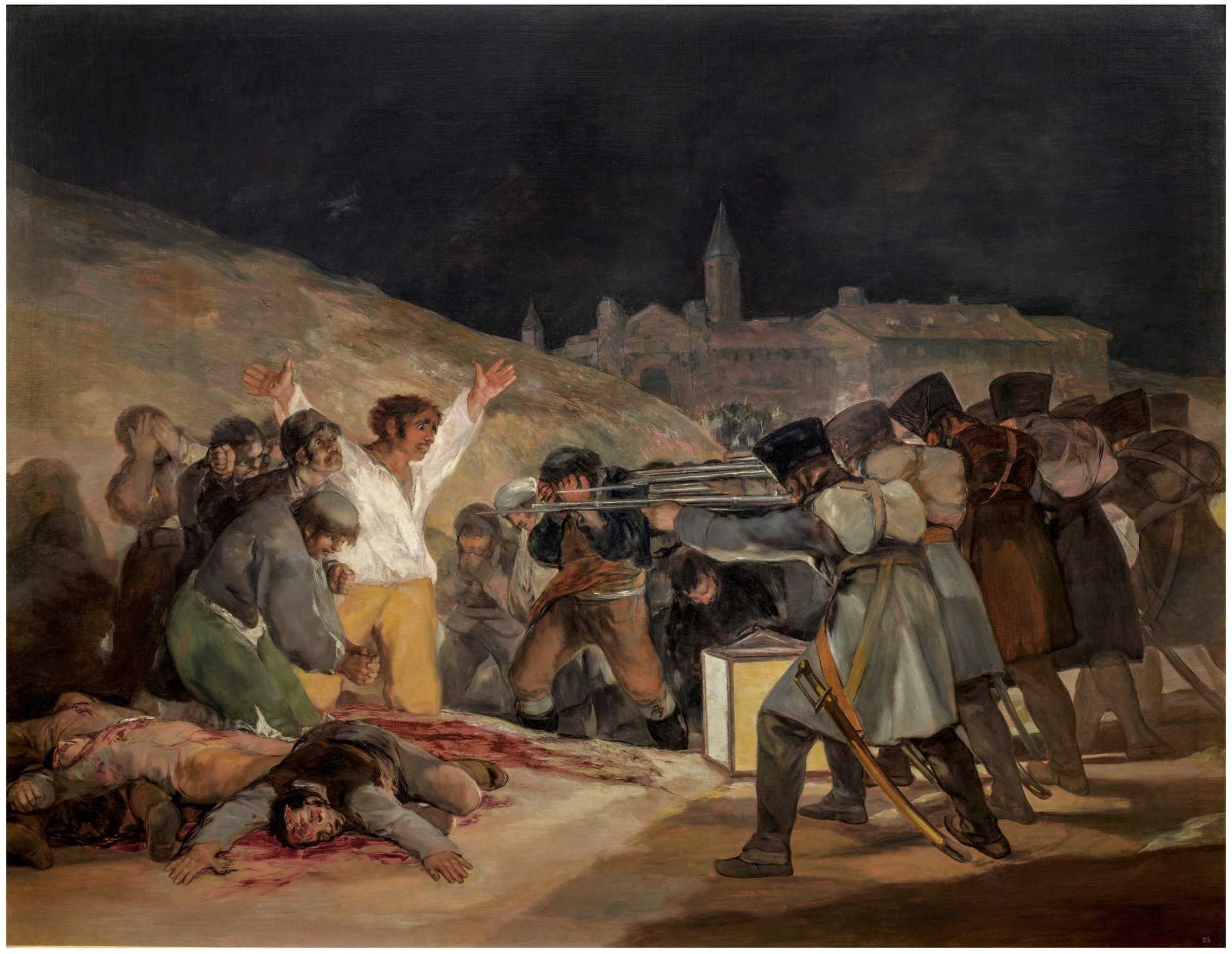
Francisco Jose de Goya y Lucientes (1746-1828) was a Spanish painter, who in 1796 was appointed as the king of Spain’s court painter. He painted a famous portrait of the royal family in 1801. Goya adopted loose brushwork and painterliness from a study of Spanish Baroque painter Diego Velazquez (1599-1660). The subject of The Third of May 1808 is the Revolution that ensued when Napoleon declared control over Spain. In 1808, Napoleon took over the Spanish throne and over the course of the first few days of May, executed any Spanish nationalists who resisted. The darkly lit scene focuses on the tragedy of the murdered individuals. A man stands, horror in his face, with his arms lifted as he begs for his life. He is illuminated only by a singular box lantern.
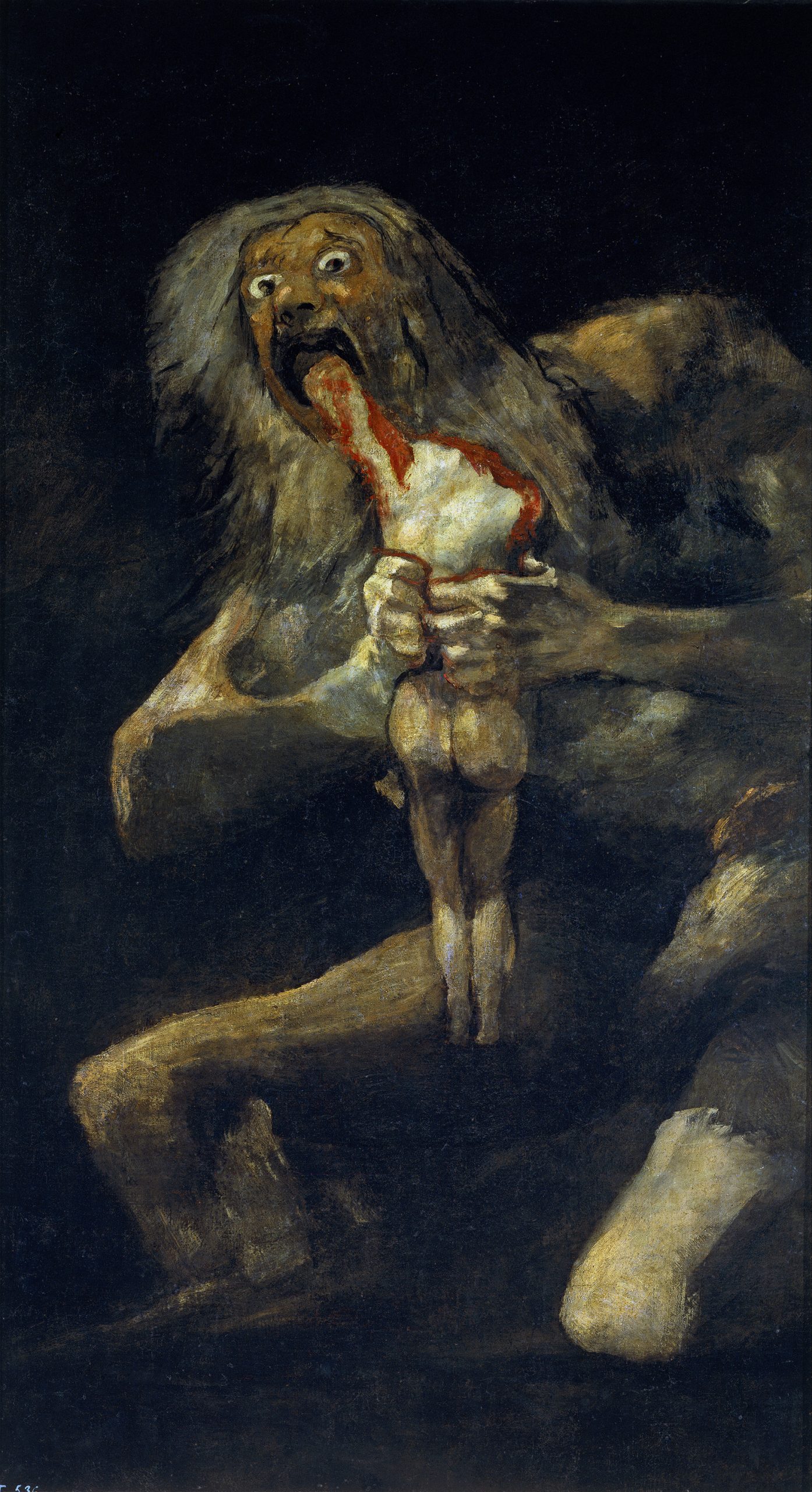
Sometimes called Saturn Devouring One of His Children, this painting is part of Goya’s 14 black paintings created between 1819-1823. In these black paintings, Goya depicts his distrust in humanity. For this painting, Goya turned to Greek Mythology and the story of the titan Saturn, or Kronos. The father of Zeus hears a prophecy that one of his children will overpower him, so when they are born, he eats them. Eventually, Zeus overthrows the titans. However, rather than depict the heroic act of Zeus, Goya, in true romantic fashion, chooses to depict the nightmarish scene of a father pulling his child apart with his teeth. The dark and gruesome scene certainly evokes emotion in the viewer.
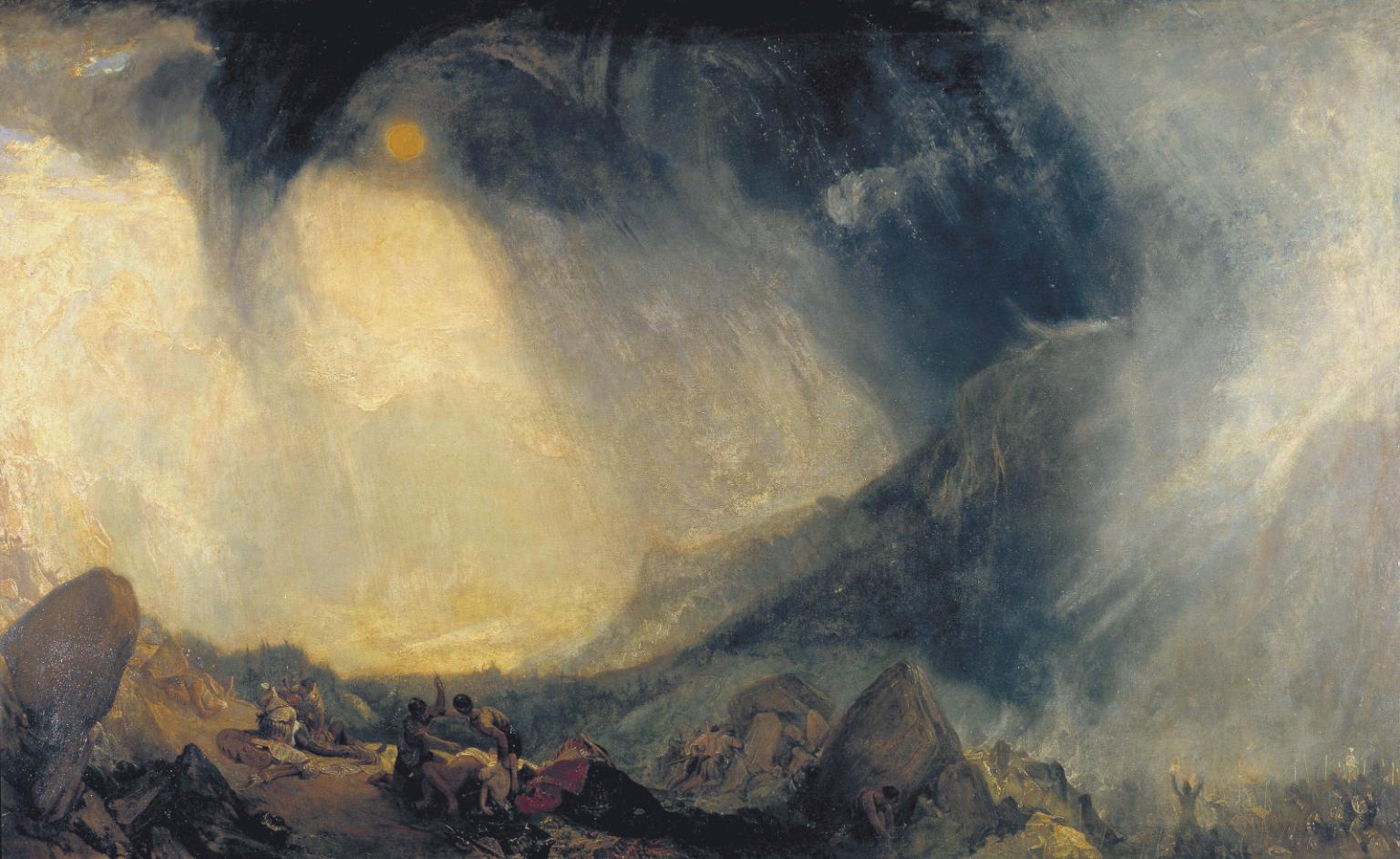
The Passage historique, rose to popularity during this time. It was a combination of history and landscape painting. The British painter Joseph Mallord William Turner (1775-1851) popularized this style in England with his 1812, Snowstorm, which depicted Hannibal’s Army crossing the Alps.
The top two-thirds of the canvas is taken up by the large snowstorm that rises like a wave above the mountains. The golden sun breaks through the clouds to illuminate a tiny blob of a figure that is meant to represent Hannibal riding an elephant. Rather than place Hannibal as the central heroic figure, Turner despite the man as tiny and overwhelmed by nature. Turner’s Snowstorm, no doubt evokes the sublime as Hannibal’s army is overwhelmed by the natural phenomenon. There is a sense of terror in the knowledge that the snowstorm cannot be controlled. However, the public found Turner’s image exciting because, as Burke noted, when “experienced from a “safe distance,” pain and fear can be thrilling.”
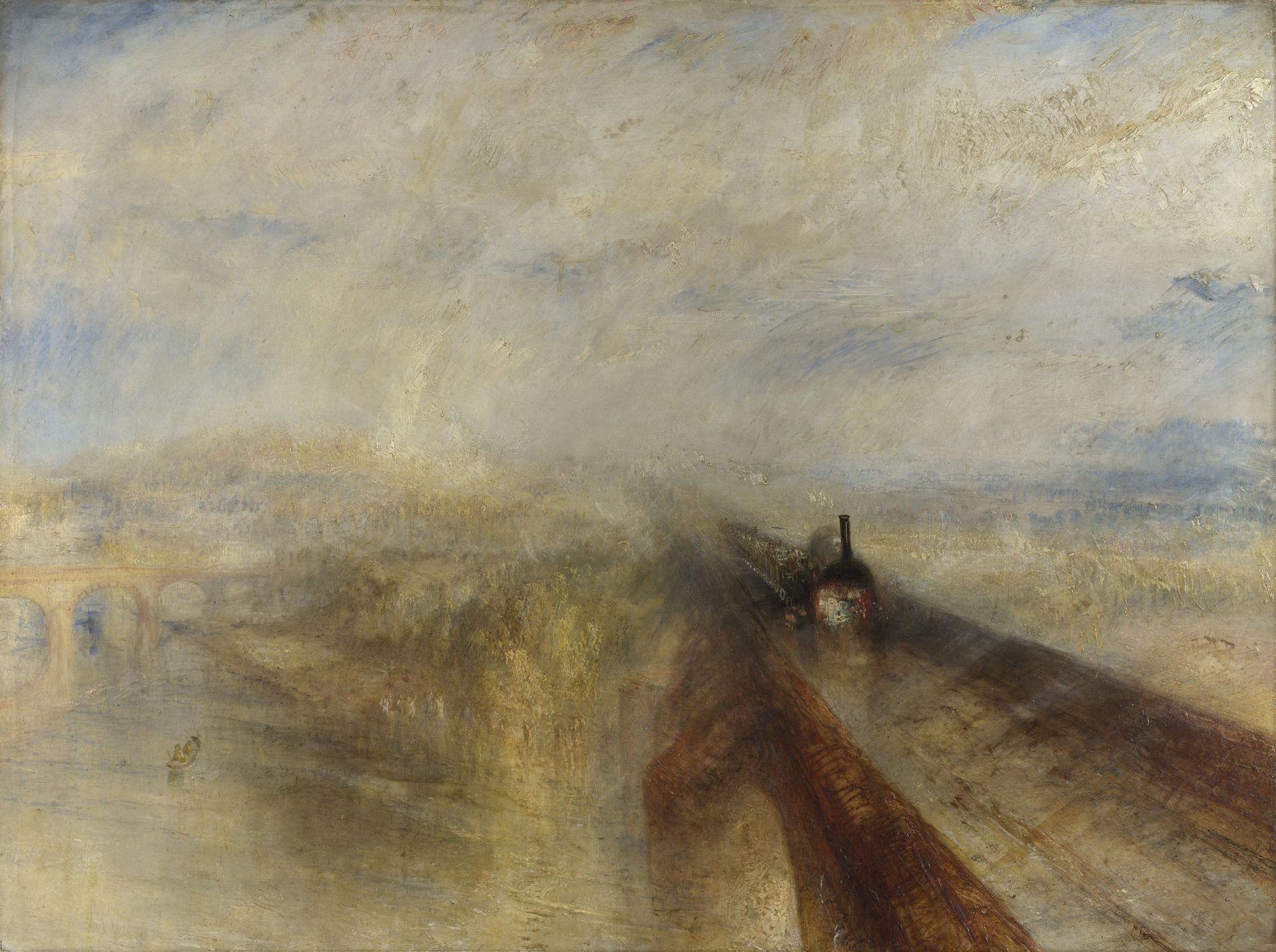
Another Romantic masterpiece by Turner is Rain, Steam, and Speed from 1844. The work evokes the sublime through the comparison of nature, technology and humanity. Turner creates the atmospheric conditions through loose brushwork and hazy colors. The rain falls in sheets, the abstracted shape of the train hinting at the direction art would take as the century continued. In this painting he recreated his own emotional experiences with train travel. We are not sure if the painting is meant to be a celebration or degradation of industrialism. However, one thing is clear, that Turner’s painting creates the sense of loss of control. A rabbit rushing by the train, and a small man rowing in a boat set the stage. Nature, the rabbit, is faster than man, but which is faster, nature of the technology that man has created?
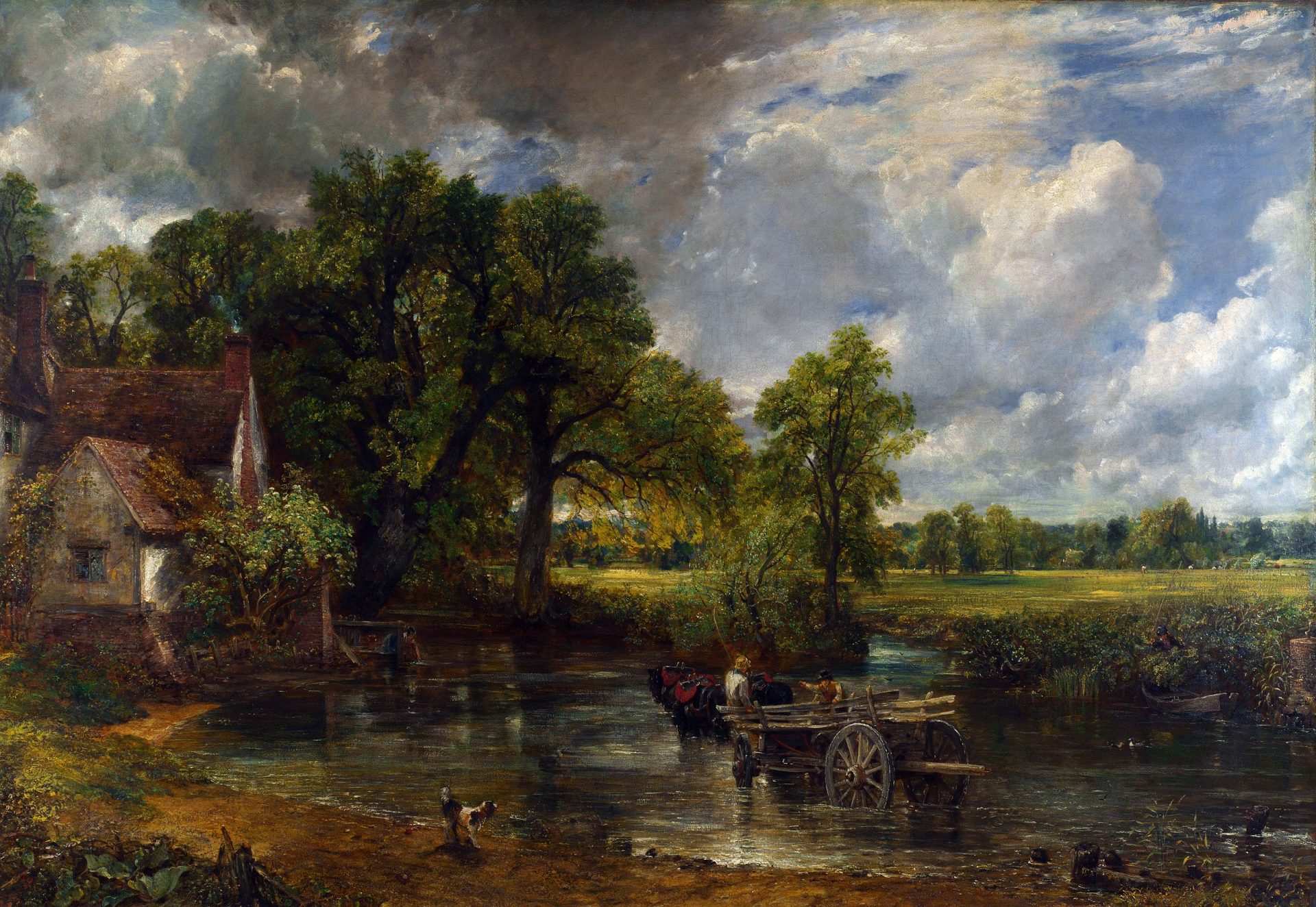
In England, without the support of wealthy patrons for history paintings, portraiture and landscape availed. John Constable (1776-1837) was a highly influential portrait painter who took on new levels of Romanticism within his landscapes. Constable began to sketch outside, or en plein air, at his family’s home in Dedham Vale, Suffolk. He compiled these sketches into the painting. A far cry from the hazy streets of London, the Hay Wain captures the peace, calm and the nostalgia Constable held for the rustic. Characteristic of the Romantic period, Constable pays close attention to nature, creating a beautiful sense of atmosphere by a dedicated rendering of the clouds. A hay wagon passes through the Millpond at Flatford Mill representing the everyday details of the life of a farmer.
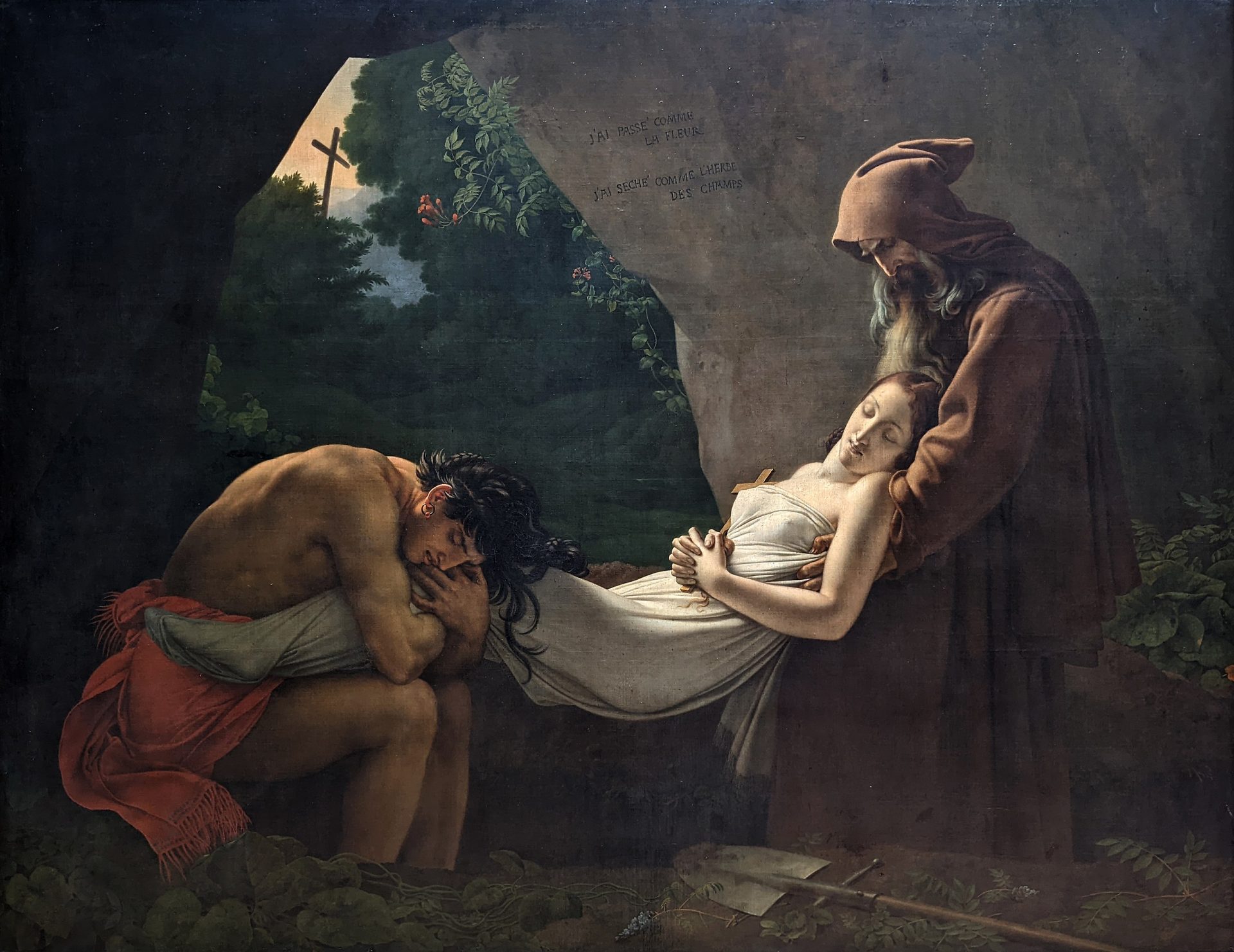
French painter Anne-Louis Giordet de Roucy-Trioson (1767-1824) chose to depict this subject from a French novel from 18th century writer Francois-Rene de Chateaubriand. The story of Atala is set in 17th century America, where she had traveled. Atala, a European woman, has vowed on her mother’s death bed to remain a virgin, but she breaks that vow when she meets and falls in love with Chactas. So, she commits suicide. Here Girodet depicts the moment of her burial mimicking the composition artists had typically used to depict the deposition of Jesus Christ.
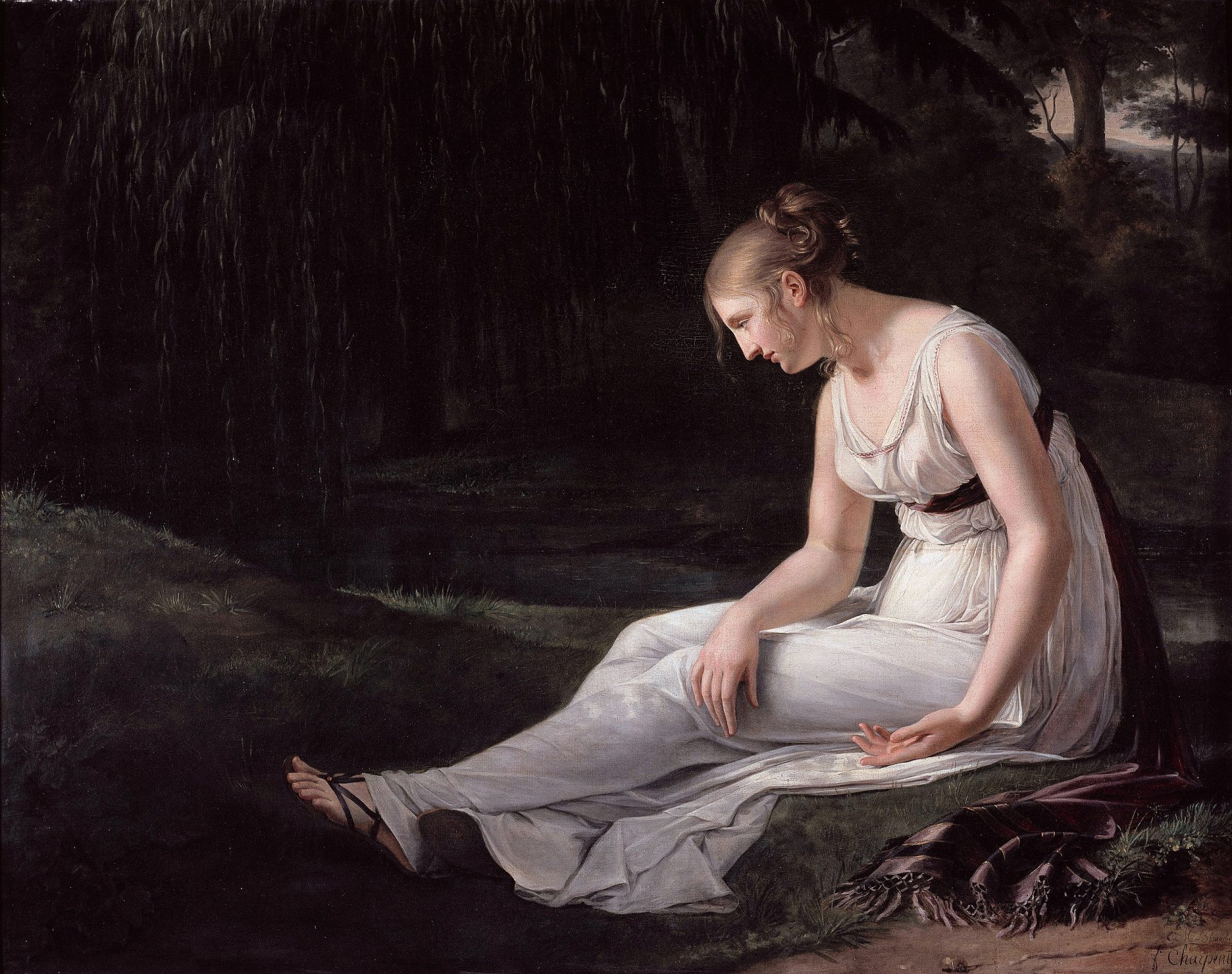
Though relatively few romantic painters were female, it is important to highlight one in particular whose work exemplifies Romanticism in painting! Constance Marie Charpentier (1767-1849) was a French painter, who painted La Melancolie in 1801. In it, Charpentier depicts a female heroine overcome with the emotion of melancholy. The elements of imagination, emotion, and introspection are highlighted in the darkly lit canvas. Taking her figure from Jacques Louis David’s (1768-1825) the Oath of the Horatti, Charpentier’s Camilla, is independent, the sole focus of the composition. Unlike David’s narrative where the importance is placed on the male hero enacting the drama, Charpentier’s narrative tells the importance of female individualism and emotion. Charpentier didn’t just embody this within her painting but was sent to exile for speaking out against Napoleon.
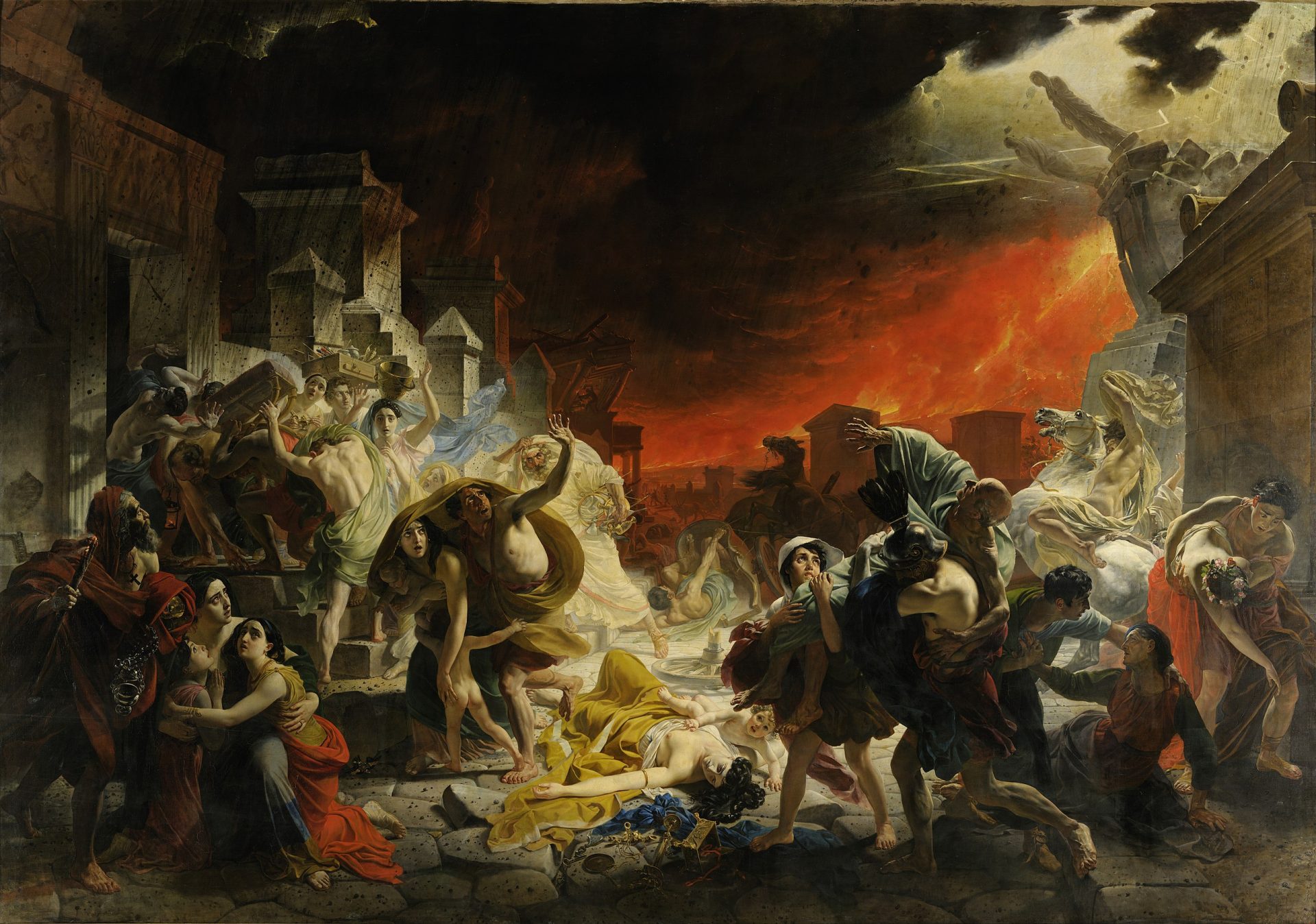
One artist that exemplified Romanticism in Russia was Karl Pavlovich Bryullov (1799-1852). Bryullov was born in St. Petersburg and studied at the Imperial Academy. In 1834, he traveled to Rome and produced The Last Day of Pompeii. Bryullov added the romantic drama to his classically trained background. He took ideas from his visit to Pompeii during the archeological excavation. The painting is his romantic and dramatic recreation of what the last day at Pompeii would have looked like when Mount Vesuvius erupted in 79 AD. The scene contains a monumentality and detailed anatomy of the figures that Bryullov learned from studying old master paintings. Like Delacroix, Bryullov learned his technique from the old masters and his compositions and inspirations somewhat reflect that. However, the dark colors, drama of the scenes and sublime terror of the action mimics French Romanticism.
